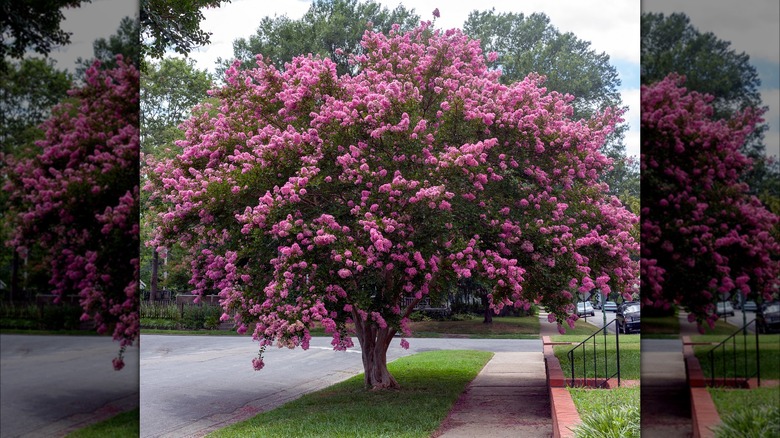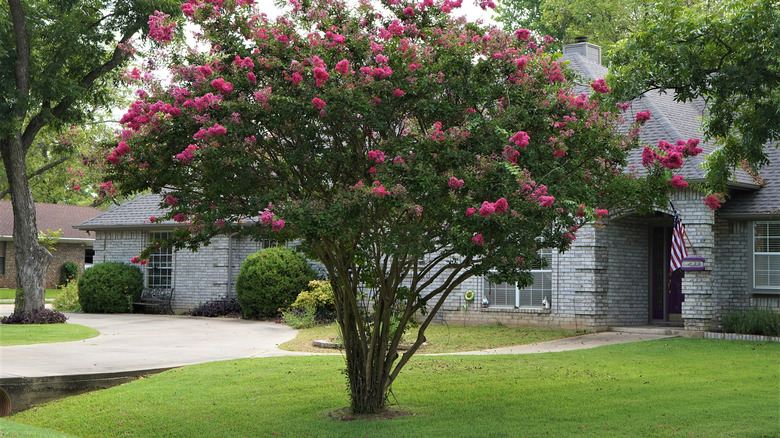Crepe myrtle trees come in a number of vibrant shades which, when pruned correctly, put on a dazzling summer show when so many other plants have languished in the heat. In hues that include magenta, purple, and delicate white, it’s easy to find an option to match any landscape. Crepe myrtles are also exceptionally low maintenance. Once established, these trees are extremely drought tolerant and require pruning only once a year. So why would anyone dislike crepe myrtles? Well, they can be a little messy, especially when planted in the wrong spot.
Not only are they colorful, but crepe myrtles come in a few different sizes. Large or tree varieties grow up to 20 feet tall, semi-dwarf trees reach about 8 feet, and dwarf options are bushes no taller than 4 feet. If you have your heart set on adding a crepe myrtle but are concerned about the size and mess, dwarf cultivars are beautiful bushes that require even less maintenance than their larger counterparts because they rarely require pruning.
Where to avoid planting crepe myrtles

Many types of messy trees still offer beauty. Catalpa, magnolias, and crabapples can all make a mess when planted in the wrong spot. The petals of spent blooms, leaves, and rotting fruits in walkways are difficult to manage because they always reappear. You clean off your walkway one day, and the next, more leaves, flowers, and fruits have dropped. It can feel like a Sisyphean task. Unless you want to clean up solid surfaces every day during the growing season, avoid planting crepe myrtles in these areas.
If you are considering adding a crepe myrtle to your landscape, there are a few things to think about. A tree variety of crepe myrtle planted near your front porch will drop flower petals and some leaves on your surfaces until late fall. The seeds left in the pods are also attractive to some types of birds, so when those dry pods offer winter food, you may end up with bird feces in that area, too. Use the same thought process near stepping stones, ponds, and driveways — anywhere you don’t want a mess.
The perfect spot for your blooming tree

While there are some less-than-ideal places to plant a crepe myrtle, there are also some areas in your yard and landscape where those small messes won’t be a problem. A large tree crepe myrtle makes a stunning foundation tree in a front yard where you will consistently mow around it. A few fallen petals and leaves will be camouflaged by your lawn and shredded when you mow.
A dwarf or semi-dwarf variety also makes a lovely addition to a mulched flower bed. The mess made by these smaller options won’t spread too far and will simply decompose. As you make your landscape plants, just make sure they are planted far enough from your walkway and other solid surfaces to keep them clean. While crepe myrtles can be a bit messy, the problem is less about what the tree produces and more about proper placement, since all trees drop leaves and other organic materials. Of course, selecting the right size of crepe myrtle for the location is also important. With these considerations in mind, you can have your crepe myrtle and enjoy it, too.




